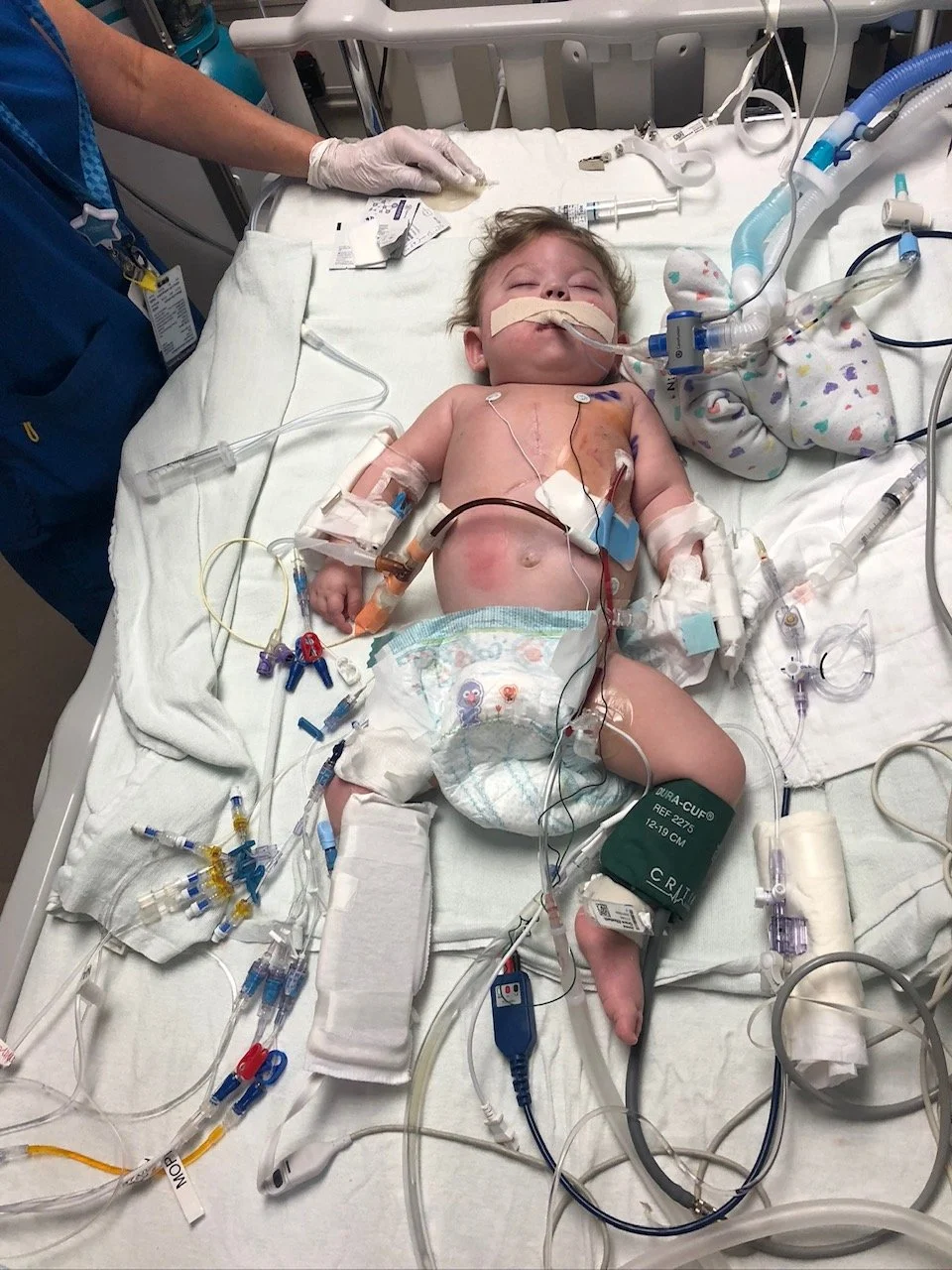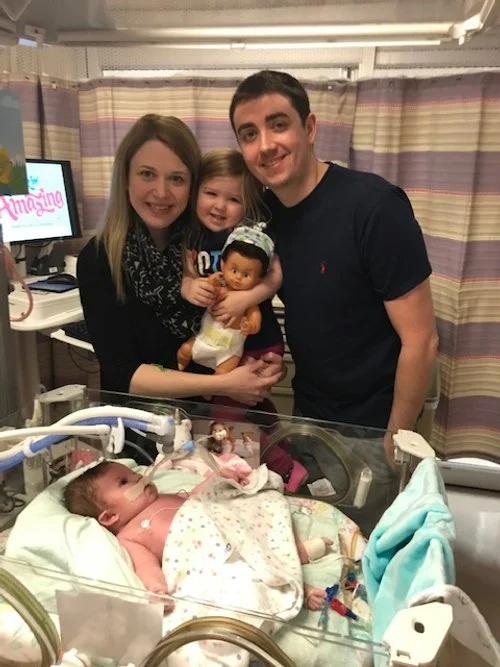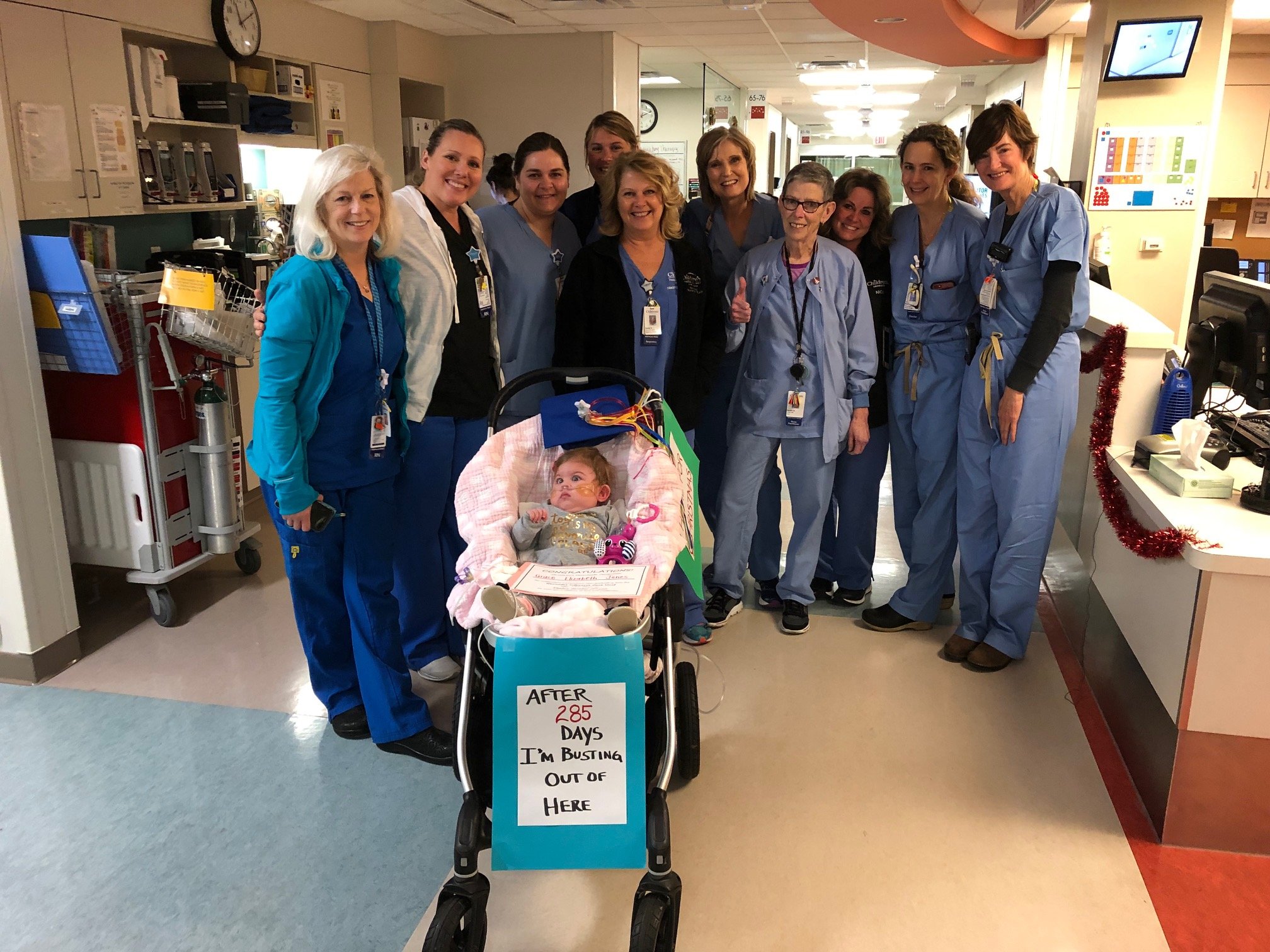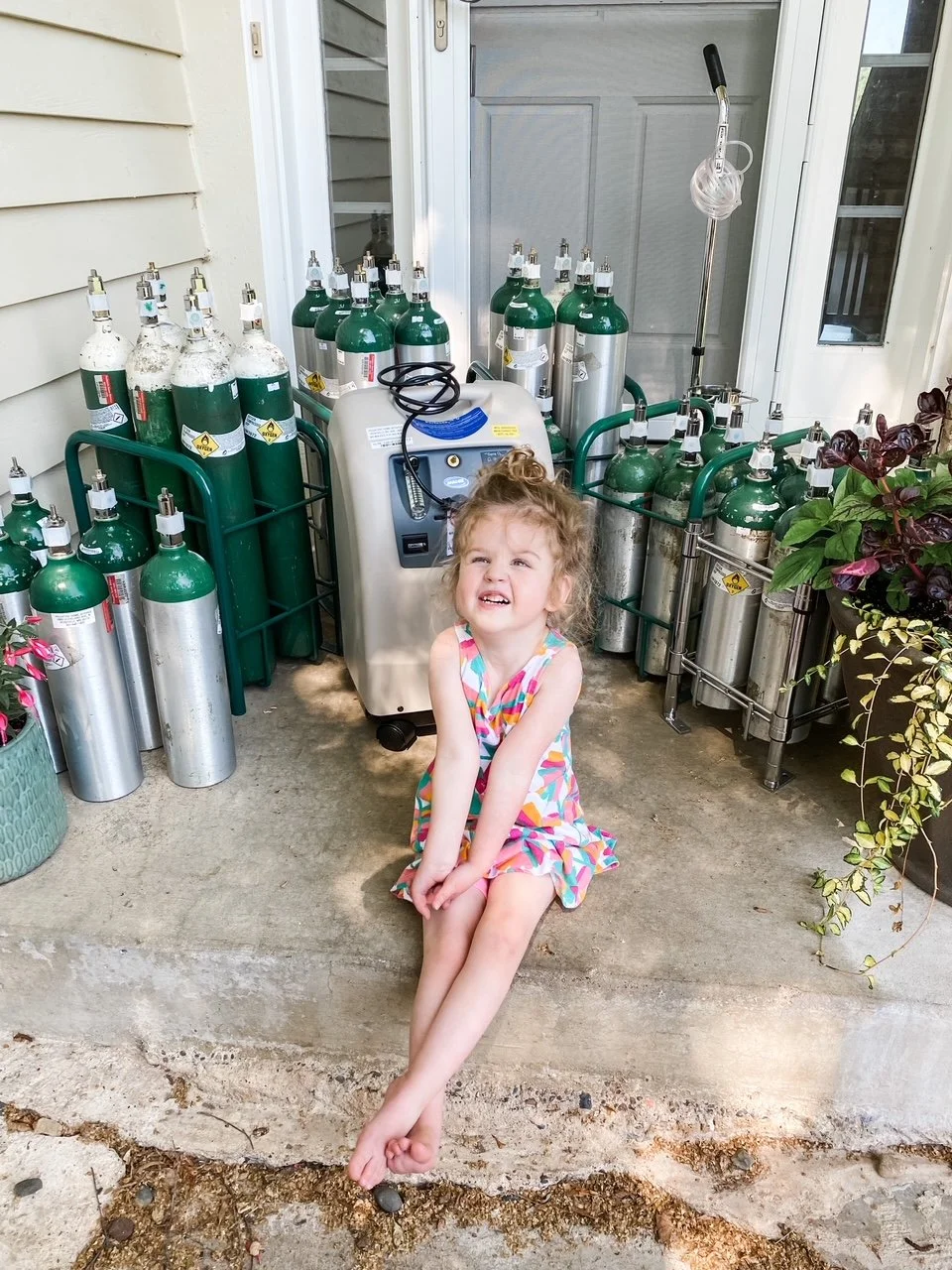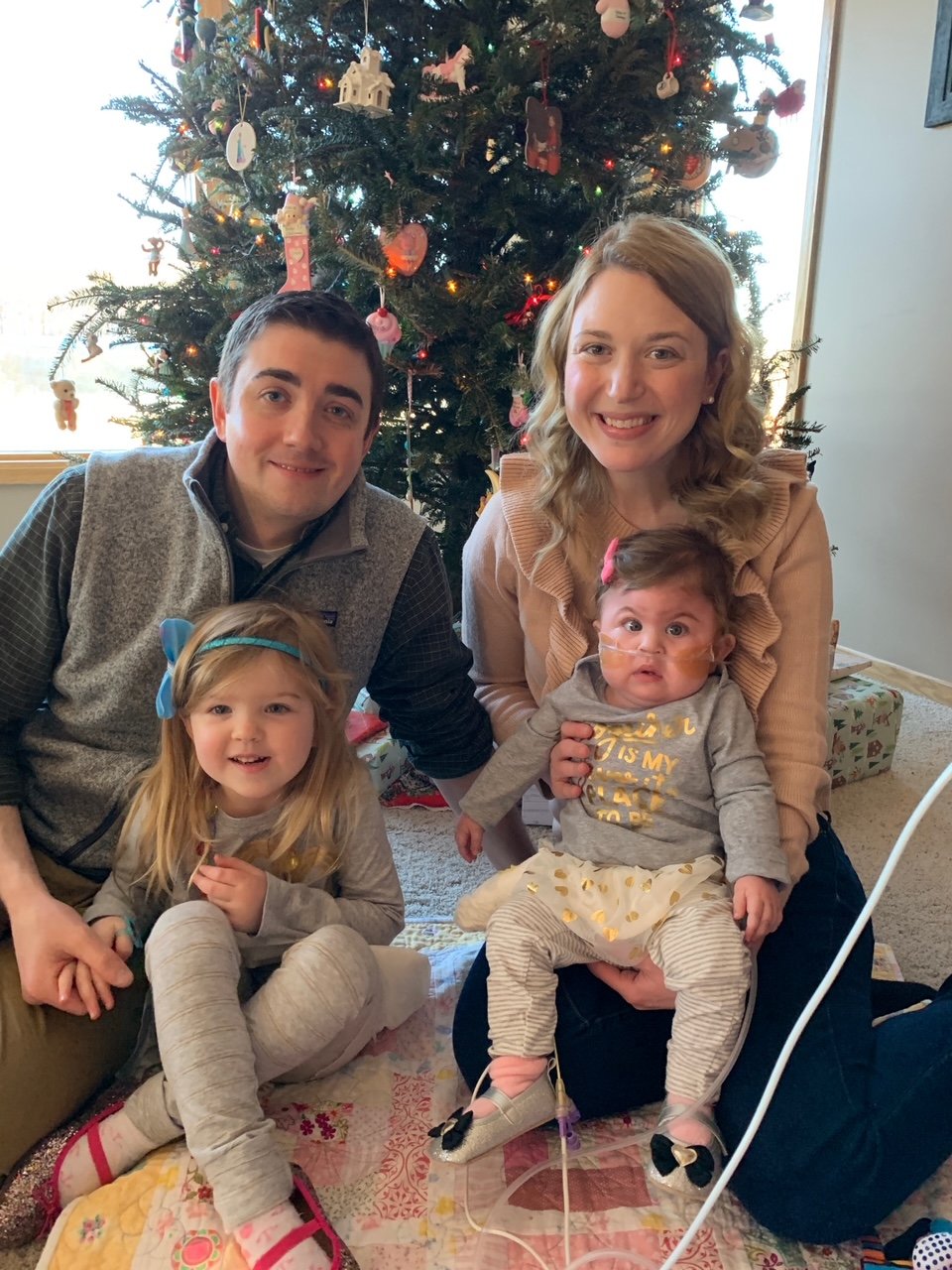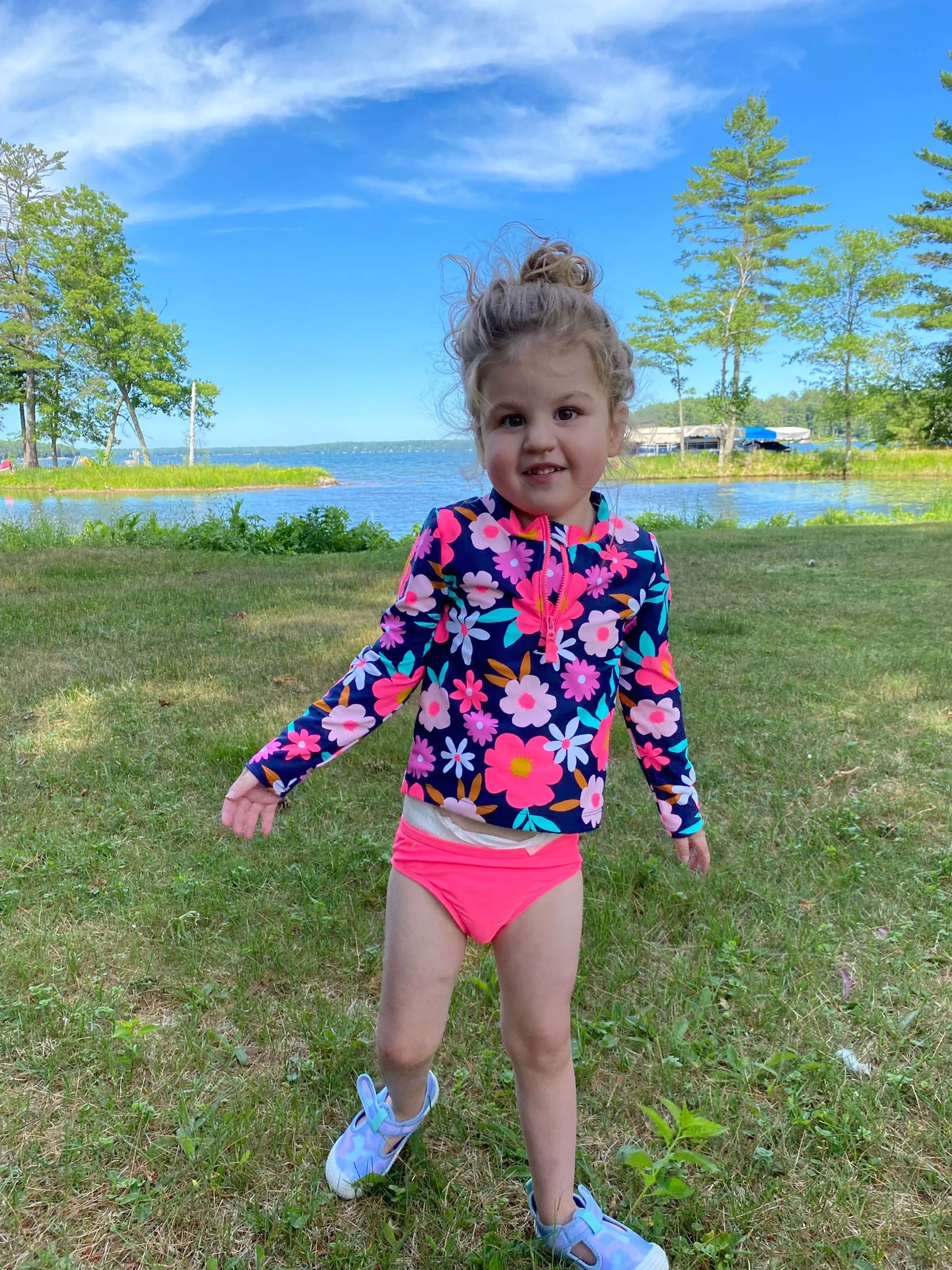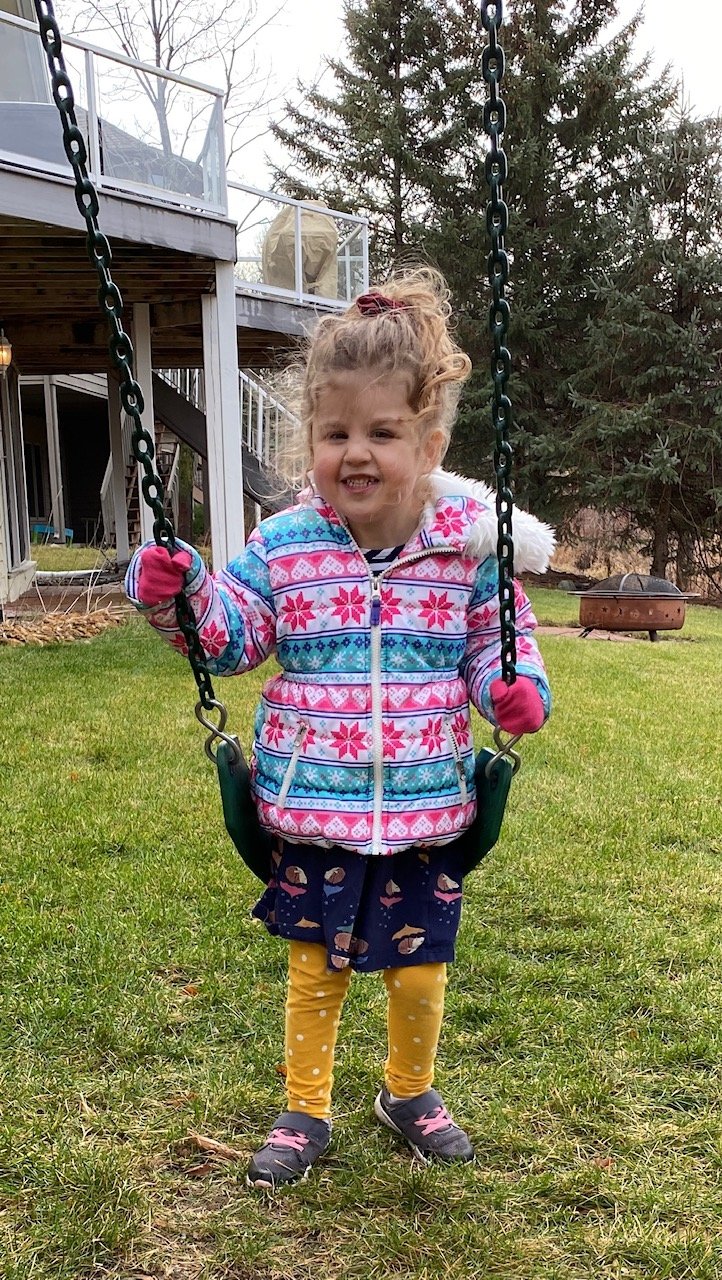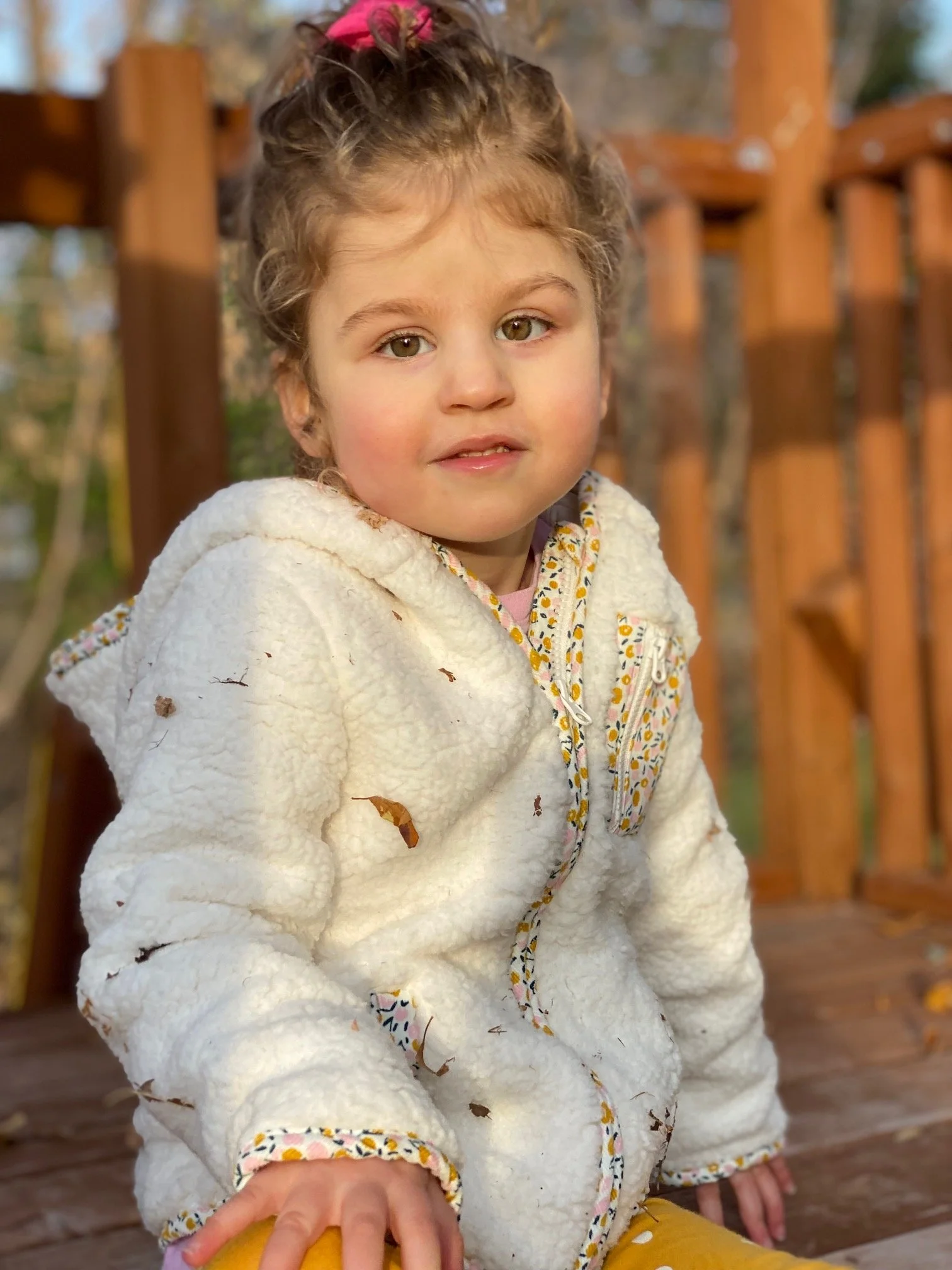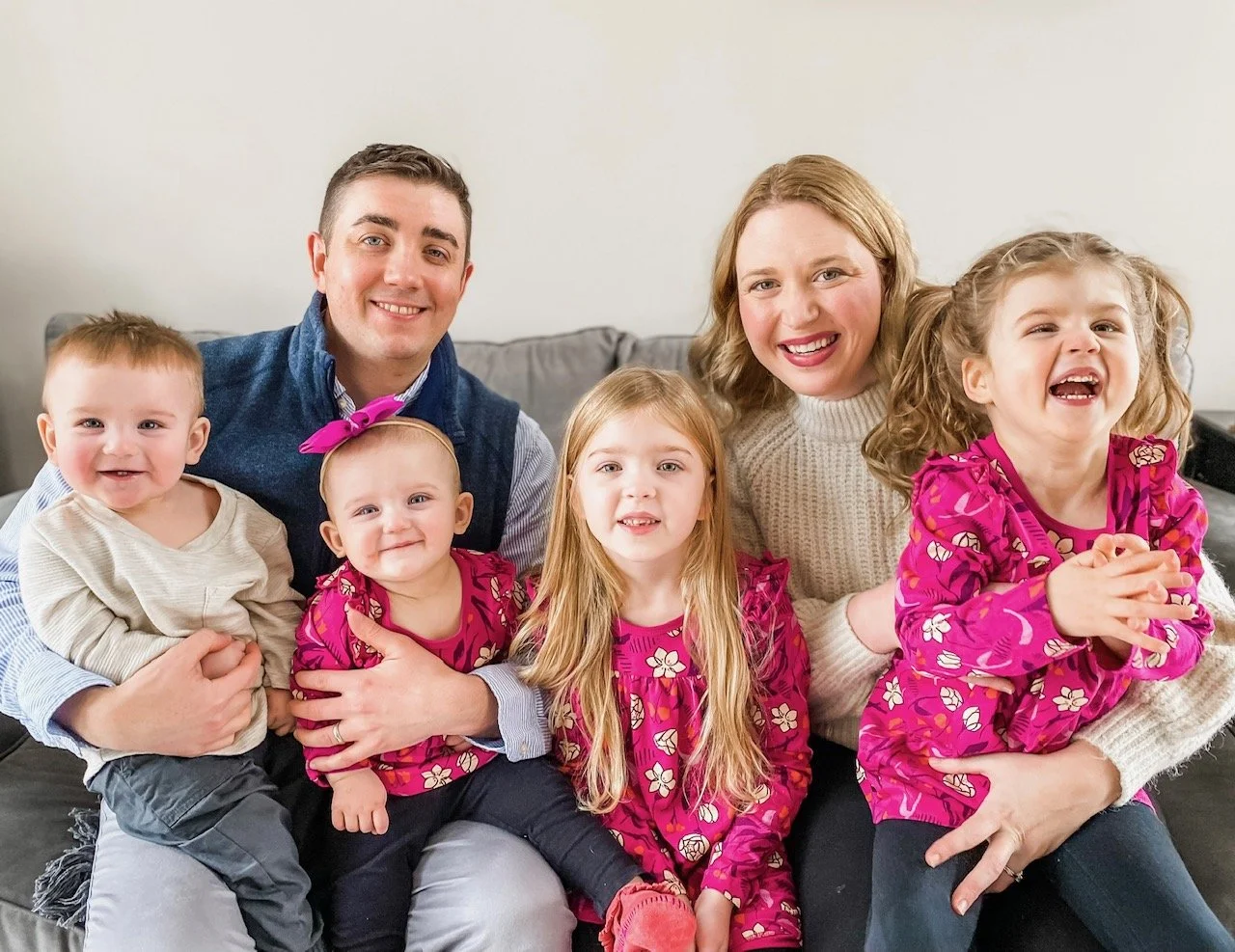Grace’s Story - Congenital Diaphragmatic Hernia (CDH)
Our Amazing Gracie is turning 4 in a few weeks. In honor of her upcoming birthday, I wanted to (finally) share her story. It has been challenging to put our journey into words. We may have put the last 285 days in the NICU and 350 total in the hospital behind us, but CDH is still very much present in our lives. Although our journey continues, I wanted to share Grace's story to spread hope to families like ours, experiencing extraordinarily long hospital stays, multiple diagnoses, or severe and complex cases.
During our 1st-trimester ultrasound screen at 11 weeks, our baby girl showed an enlarged nuchal translucency in her neck. Although our NIPT (Noninvasive Prenatal Testing) bloodwork came back negative for chromosomal abnormalities so we were referred to maternal-fetal medicine for a Level 2 ultrasound at 14 weeks. The moment that the MFM (Maternal-Fetal Medicine) doctor came into the room to share Gracie's Congenital Diaphragmatic Hernia (CDH) diagnosis will forever be emblazoned in my mind. We were shocked and devastated. She explained that CDH is life-threatening and that typically only 50% of babies survive. Thankfully, our hospital, Children's Minnesota, had an 85% survival rate along with a strong ECMO program and a history of handling a higher volume of CDH cases.
Gracie's case was in the moderate-to-severe range throughout pregnancy, with her numbers hovering around the 25th percentile for lung growth estimations gathered from ultrasounds and MRI. Given Children's Minnesota's strong track record with CDH babies and their confidence she would survive with exceptional care, we chose to stay close to home. Despite an extremely complex, rare, and unprecedented course, every doctor, nurse, NP, RT, therapist, chaplain, child life specialist, and provider that saved Gracie's life along the way always believed she would make it. And we believe that is why she did.
Grace was born on March 7, 2018, was briefly placed on my chest, and then whisked off into the adjoining room to be intubated and given an arterial line and chest tube for her first pneumothorax before making her way up to the NICU. We saw her briefly in a very busy and hectic NICU room before heading back to our postpartum room, empty-handed and heartbroken.
At 9:00 pm, about 4 hours after birth, the neonatologist called to inform us she needed to put Gracie on ECMO. It was exactly what we feared. My husband and I held each other and sobbed, our worst nightmare coming true. Thankfully her ECMO placement went smoothly and she stabilized over the coming hours and days. After I was discharged, we stayed at the Ronald McDonald House located on the same floor as the NICU and visited day and night. We were grateful all four grandparents were able to stay with and spoil our 2-year-old, Josie, with lots of love at our house about 20 minutes away.
Grace had her first diaphragm repair surgery on ECMO at one week old. She had almost no diaphragm, especially along the left side and back, so a large 12x12cm Gore-Tex patch was sewn into her chest wall. At 10 days old, Gracie came off ECMO and tolerated weaning off some medication. I got to hold Gracie on my birthday when she was 12 days old. It is still the best gift I have ever received! We soon moved from the high-tech NICU room reserved for the most critical babies into a "regular" room. Shortly after our move, at about 3 weeks old, Gracie was extubated to CPAP but needed NAVA (Neurally Adjusted Ventilatory Assist) support to avoid reintubation. She held on for about a week but was emergently reintubated after dangerously high CO2 levels and an increase in pulmonary hypertension pressures.
Gracie's severe pulmonary hypertension required many echocardiograms and any movement, touch, or stress could send her into a hypoxic spiral where her O2 sats dropped and she often required bagging. Thankfully she was responsive to nitric and her team started sildenafil as well (both medications to help with her respiratory status). To avoid additional pulmonary hypertensive crises, we tried to limit care, weights, dressing changes, labs, and X-rays. Gracie got a couple of PICC lines around this time to help with access and limit labs.
It was also around this time we learned Grace had a heart murmur caused by a congenital heart defect (CHD) called an atrial septal defect (ASD). Gracie's ASD was quite large and provided a "pop-off" valve for her pulmonary hypertension. An ASD forms when a typical hole in the heart does not close after birth (possibly due to the blood shunting back), so it was not detected in our prenatal echos. We also learned she had a skull condition called craniosynostosis. The skull plates in her forehead were fused together at birth and would eventually require surgery to separate. We were distraught over the additional diagnoses. I could not wrap my brain around a baby surviving CDH, open-heart surgery, and neurosurgery as well. It was incredibly overwhelming. We were grateful to be surrounded by a confident and supportive team including incredible neonatology, pulmonology, cardiology, and neurosurgery teams to guide our care.
We soon learned a piece of bowel loop was slipping up past a portion of her patch and pushing into her lung, causing additional respiratory distress. It felt like we could not catch a break and we often feared Gracie would not survive. After careful consideration with our team at 2 months old, we sent Gracie back to the OR for her second CDH surgery. Her liver had adhered to her lung, which also may have been constricting her breathing. Her patch was resewn and she miraculously flew through surgery and improved dramatically shortly after. She also got a G-tube and a broviac central line in her leg. She started to improve slowly and even started some feeds.
About a month later, at 3 months old, she herniated again. This time it was an emergency with full bowel loops in her chest. We were devastated and felt like we would never make it home. The surgery was successful but she had a pseudomonas infection shortly after prolonging her intubation, unfortunately. Gracie also continued to struggle with feeding and threw up multiple times a day. We opted to try a PEG G-J tube and it was a game-changer! Gracie was suddenly able to tolerate meds and feeds without vomiting breast milk back up via J-tube. We slowly increased her continuous feeds and worked on weaning off meds. She came down on some respiratory support but, due to her pulmonary hypertension, she still required nitric and a lot of oxygen to keep her O2 sats up. Grace started an additional pulmonary hypertension med called Bosentan around this time. She was able to wean down to about 4-5L of high flow oxygen but was still needing vasodilators such as nitric, 40-50% oxygen, and sildenafil to stay oxygenated- especially during PT, OT, and music therapy.
It took about a month for Bosentan to fully kick in but, eventually, during her weekly echo, when the cardiologist ordered her nitric turned off, her sats did not plummet! Getting off nitric was a huge win and allowed us to move forward with open heart surgery and get one step closer to home.
Our team at Children's carefully consulted together and with other institutions about how to proceed with Gracie's ASD. She had two heart catheterizations to determine how severe her pulmonary hypertension was and how it responded to interventions. Cardiology, pulmonology, and neonatology worked together to determine that Gracie's ASD should be repaired via open-heart surgery. They felt it would be the missing piece to the respiratory and pulmonary hypertension puzzle.
At 6 months old, we left the only home she had ever known, the NICU, to head upstairs to the CVICU. We were so nervous about being away from our beloved primary nurses and trusted doctors. Thankfully, the CVICU was absolutely fantastic and Gracie did amazingly well! We were back in the NICU two weeks later, still on 3-4 liters of high flow but no nitric. We started to plan her craniosynostosis surgery so we could hopefully come home after. It was planned to take place just shy of 8 months old and we were hoping to go home shortly thereafter. Gracie was still struggling to get down to "low flow" oxygen so we could take her home only on the tank. We soon learned why she was struggling.
Shortly before her 8 "monthiversary," some crackles and an X-ray pointed to a 4th reherniation. Gracie deteriorated quickly and was reintubated on the day she turned 8 months old. Surgery followed and was the toughest recovery yet. We were heartbroken. We desperately wanted our Gracie home and yet another major setback shattered our hopes.
Miraculously, Gracie turned the corner after her final surgery and finally weaned down to 1L of oxygen after 9 months in the NICU!!!!
After 285 days, Gracie finally came home!
Gracie came home on 1L of oxygen, continuous J-tube feeds, lots of meds, daily nebs, and weekly nursing visits/labs. About two months later, we returned to the PICU for craniosynostosis surgery and stayed two months due to complications with aspiration pneumonia. After PICU and 350 days total in the hospital, she came home with a broviac, even more meds, and very exhausted parents, but this time she came home for good!
Since then, Gracie has only had one brief unplanned hospital admittance due to aspiration pneumonia about a year after our PICU discharge when she was two. Otherwise, she has been home and working hard in PT, OT, speech, feeding therapy, and going to many appointments. She came off oxygen after a stellar heart cath at age 2 and graduated to a G-tube and bolus feeds around the same time.
Gracie is now almost 4 and loves to paint and color, dance to music, swing, practice her letters and numbers, read books, and most of all go to preschool! She can eat by mouth but we still use her G-tube for optimal nutrition and hydration. She started walking at age 2 and has been on the go ever since! Gracie also uses an AAC device to communicate in addition to some signs and spoken words. Last year, she became a big sister to twins babies Mary Kate and Freddie, who adore her. Big sister Josie, who is now 6, is still her favorite person in the world. Gracie is a gift to our family and brings so much joy to our lives.
To CDH families - whether you just got a diagnosis, are stuck in the NICU feeling like you'll never get home, or are navigating post-NICU life with a medically complex little one, you are not alone. There is hope even in the most complex cases. Your little one is loved and worthy. Just like our Gracie, the size of the hernia will not necessarily determine the severity of your case or the length of your little one's stay. Coming home with or without oxygen, trach, meds, or a feeding tube does not determine your child's worth. And the outcome does not determine the value of any Tiny Hero's life. All of our kids are worthy, valued heroes who are loved unconditionally and that is all that matters.
Find a team that believes in you and your baby and is not only equipped to handle CDH, ECMO, and pulmonary hypertension but also with a strong CVICU and PICU - because CDH babies love to throw curveballs. Take it one day, hour, minute at a time and focus on what your baby needs that day to stay stable and make progress towards home.
It was not an easy journey for our Amazing Gracie or our family and it can still be challenging today. But we would not trade our girl - exactly the way she is - for anything. Every day we are grateful for the gift of Grace.

